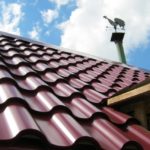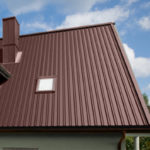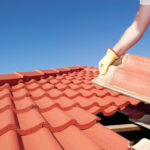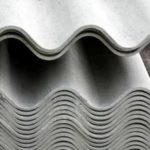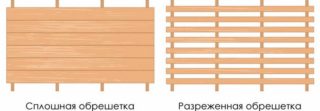Over time, the roofing material deteriorates, becomes unusable due to contact with solid objects, and becomes obsolete. It comes to the point that the repair is not economically feasible or it has to be repeated frequently. The best solution is to cover the roof to make it more modern, beautiful and original. This event is quite difficult, but quite doable with your own hands. The main thing is to choose the right material and deal with the technology of its laying.
Parameters for the selection of roofing material
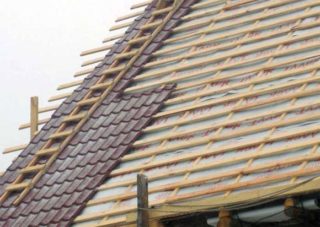
Roof overlap should be started by examining the rafter system. It may well need to be repaired and even replaced. This is a responsible and costly business, but the frame can be changed to fit the format of the new coating.
The choice of roofing material must be approached, focusing on the following criteria:
- Durability. The service life of the roof should be no less than that of the walls of the house. This will save you from frequent and time-consuming restoration work.
- Ecological cleanliness. You should look at the performance of the coating when exposed to heat and solar radiation.
- Resistant to fire. It is advisable to give preference to non-combustible flooring, immune to chimney sparks and lightning.
- Strength. During operation, the roof is exposed to wind and snow loads. It must be strong enough to maintain its integrity even in extreme weather conditions.
- Attractive appearance. Manufacturers offer a wide range of coatings that differ in color, texture, size, smoothness and installation method.
- Styling technology. The simpler it is, the less effort and money will have to be spent on construction. Self-overlap of the roof will allow you to save a lot on the services of professionals.
One of the main conditions for making the right choice is purchasing material from trusted manufacturers. It is better to pay for quality than to face problems due to the purchase of coverage of dubious origin.
Common roofing materials
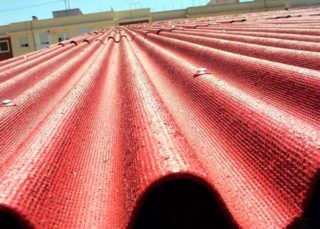
The design of the roof and the material for the roof depends on the intended type of the future roof of a private house. Most property owners prefer pitched structures, which are much more practical than flat counterparts.
To cover the roof of a residential building, you can use the following types of materials:
- Ondulin. Modern polymer coating with a wavy surface. It is used for sloping surfaces of any inclination angle. Resistant to frost and low temperatures. Differs in ease and simplicity of installation.
- Metal tiles. It is a piece coating made by stamping. Tin is processed with polymer spraying, which makes it resistant to corrosion. The metal profile is thin, lightweight and exerts minimal pressure on the supporting systems of the building.
- Ceramic tiles. It is a classic with a long history of use. Laying is not difficult, but it requires the construction of a solid rafter system designed for the large weight of the flooring.
- Professional sheet. It is a cold-rolled steel sheet with a profile of various shapes and heights.Due to the low weight and large area of the panels, covering the roof is easy, it can be done within one working shift.
- Slate. It is produced in the form of large panels with a wavy profile. The sheets are heavy, therefore installation is associated with significant difficulties. The material contains asbestos, so it is used less and less.
A huge selection of materials for the roof and original design developments allow you to emphasize the taste and status of the owner.
Advantages and disadvantages
Each type of coating has its own pros and cons, which must be considered when planning a roof overlap. There are no universal solutions, but knowledge of the features of the materials will allow you to find the best option for each specific project.
Classic clay tiles look luxurious and personable, are durable and soundproof. The downside is the high cost and additional costs of equipping powerful rafters.
Metal products (tiles, sheets) attract developers with an affordable price and ease of installation. The variety of colors can satisfy every taste. A significant disadvantage is that when it rains, the steel flooring makes a loud noise, which cannot be completely eliminated even with mineral wool. In addition, even despite the polymer coating, iron still rusts.
Ondulin is available in a solid and flexible design. The bitumen-based polymer is quite durable, the soft version is well suited for finishing complex, curved and broken surfaces. It should be borne in mind that the sheets must be tightly and often screwed to the crate to prevent vibration and noise in the wind. Ondulin has rather dull colors, their palette does not differ in variety.
Slate has the least positive qualities. These include an affordable price and a high speed of installation of the flooring. In finished form, it looks very modest and faded. From impacts, the coating cracks and breaks, snow does not come off badly on a rough surface. After 15 years, the slate begins to release asbestos fibers into the air, the flooring has to be dismantled and disposed of.
Roof preparation for overlap
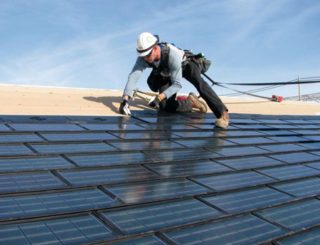
Since the roof is a complex structure, consisting of a system of rafters, insulation, waterproofing, internal cladding and external covering, all components need to be given time and attention. After the end of the overlap, access to the "roofing pie" will be closed, it will be difficult to correct mistakes.
Preparatory work consists of the following stages:
- Removal of items on the roof: antennas, weather vane, lighting fixtures and wiring.
- Dismantling the flooring. This should be done in the opposite order of styling. First, the ridge profile is removed, then the covering elements from top to bottom. In conclusion, additional details are removed.
- Removing the vapor membrane laid over the battens. Study of the condition of the insulation. If it is satisfactory, the material can be left.
- Checking the rafter system for cracks, fungus and rotting, carrying out minor or major repairs with the replacement of individual elements. If provided by the project, a complete dismantling of the frame is carried out.
In conclusion, the wood is treated with an antiseptic, insulation and waterproofing are installed.
Requirements for the crate
There are the following requirements for the crate:
- For a flexible material, which includes bituminous tiles, rolled ondulin and a folded roof made of tin or copper, a solid plane is made, mounted on a counter-lattice. The material is boards, thick plywood, particle boards.
- For tiles and sheets, a discharged structure in the form of a ladder with a step of 30-50 cm is equipped, depending on the technological characteristics of the material.
The wood must be of good quality with a moisture content of no more than 22%. Curvatures, traces of rot and large knots are not allowed. The joints must be placed on the longitudinal beams to eliminate sagging.
Do-it-yourself roof overlap features
When working with your own hands, special attention should be paid to safety precautions. It is necessary to use insurance, protective gloves, goggles and hard-soled shoes. The area around the house should be fenced, warning signs posted. Tools should be tied to a belt or crate to prevent them from falling down.
The material should be purchased only at trusted retail outlets, resisting the temptation to take it cheaply from dubious retailers. It is recommended to take the coating, components and fasteners with a small margin - up to 15% of the need, counting on cuttings, errors, damage during transportation, storage and installation.

